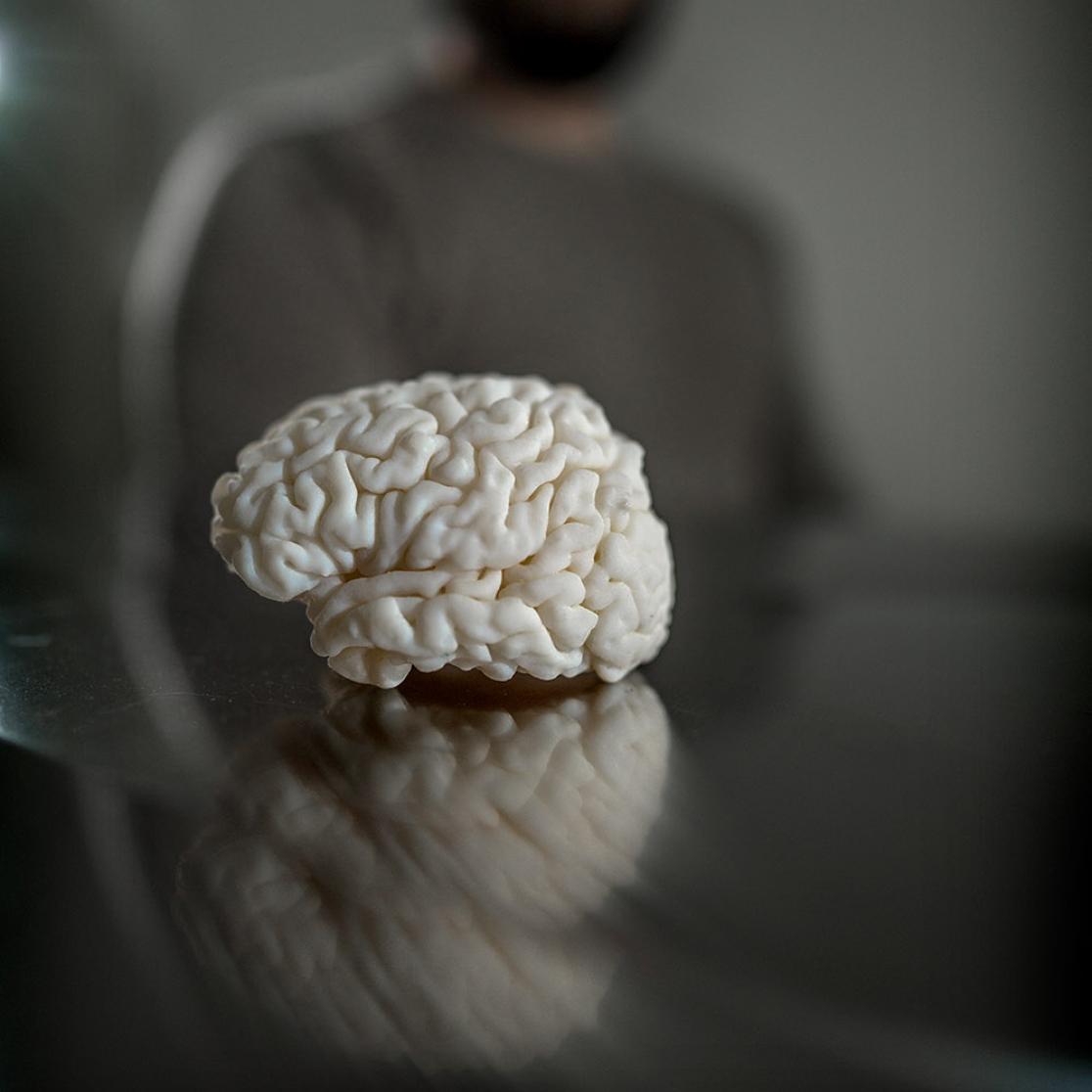Nerd with a calling
Cognitive Neuroscience alum Job van den Hurk works as a data scientist and scientific manager at the MRI centre Scannexus. He is also ‘the prof’ in Brainstorm, a youth television programme on NPO Zapp. His passion: making neuroscience accessible. “We have to teach children to develop a bullshit detector.”
Why psychology, why Maastricht? “Well ...” After a moment of hesitation, he decides that the truth must be told. “It was Dr Phil. Watching Dr Phil, I saw that apparently you could study thoughts, feelings and behaviour at a deep level. And at an Open Day in Maastricht, I discovered that you could combine psychology with other interesting programmes, like law and medicine. I was a typical high schooler who didn’t know what to study. But I went to a lecture by the legal psychologist Marko Jelicic, who talked about the fallibility of memory and the reliability of witnesses in a court case. I wanted to learn about cool stuff like that.”
During his studies, Van den Hurk became more and more intrigued by the brain, in particular the MRI technique that facilitates functional brain research. “I find it fascinating how brain matter—neurons—give rise to the human mind.” His teachers were his role models. “I was impressed by their knowledge and skills. People like Federico de Martino have always inspired me. He may even be the reason I got involved in artificial intelligence as a way to approach brain data.”
A sensitive breast reconstruction
After his PhD, Van den Hurk was asked to conduct research at the MRI centre Scannexus. He manages innovative projects in the field of functional brain research. Often these involve possible future treatments, such as a breast reconstruction that allows for physical sensation. “When new breasts are created after a mastectomy, the main nerve pathways and blood vessels are connected to those of the transplanted skin of the new breasts. This way, women regain feeling in their breasts. What we’re investigating is whether the sensation that a woman feels in a specific breast area after such surgery is also visible neurologically, as it is in healthy women. Can they distinguish between the stimulation of different parts of the breast? What’s nice is that it’s not only about the brain, but also about the consequences for a person’s life.”
Van den Hurk most enjoys writing complex computer algorithms that extract the information he needs from a dataset. “To be honest, I’m a proper nerd. I get a kick out of learning to understand things from complex patterns of information. Here we do that with the help of the latest scanners. It’s exciting to use advanced computer techniques to produce data from the body—you discover parts of reality that you didn’t know existed.”
Superhero powers
He may be a nerd, but he is one with a calling. Van den Hurk aims to popularise neuroscience. “Even as a student, I used to speak at Open Days on how cool the brain is and what scanners can do. Teaching is one of my passions.” He gives lectures at schools, writes for the online magazine KAF, and co-founded the interactive app and website BrainMatters, which makes the latest brain research accessible to laypeople and students. One thing led to another, and he was invited to make segments for youth TV programmes such as Het Klokhuis and Willem Wever.
Six months ago, Van den Hurk became a co-presenter of Brainstorm, a new children’s programme about the brain. As ‘the prof’, he performs all kinds of brain experiments. Why do we lose our appetite when we see blue spaghetti? Why does the brain function less well in a freezing cold or hot environment? One of his favourite experiments concerns whether humans have superhero-like powers. “There are stories about a daughter who sees her father trapped under the wheels of a car, and lifts up the car by herself. Is that possible? Yes, it is: a boost of adrenaline and stress hormones can give you extra strength.”

Also read
-
Empowering Smallholder Farmers in the Data Economy: Unlocking Opportunities and Overcoming Obstacles
Frederik Claasen, the head of policy at our partner organisation Solidaridad Network on the opportunities and obstacles facing smallholder farmers in their data ecosystems.
-
The last 'nerve doctor' in the Netherlands
Frans Verhey, professor of Geriatric Psychiatry and Neuropsychiatry is proud of what the Limburg Alzheimer’s Centre has achieved and of its team, which works tirelessly to improve the quality of life of people with Alzheimer’s. “Alzheimer’s tends to be seen as a horrible, deadly brain disease that...
-
The scientist, the chef and her passions
Anne Roefs was awarded a Vici grant of €1.5 million. The professor of Psychology and Neuroscience of Abnormal Eating, was tossing up between a career as a scientist or a top chef.